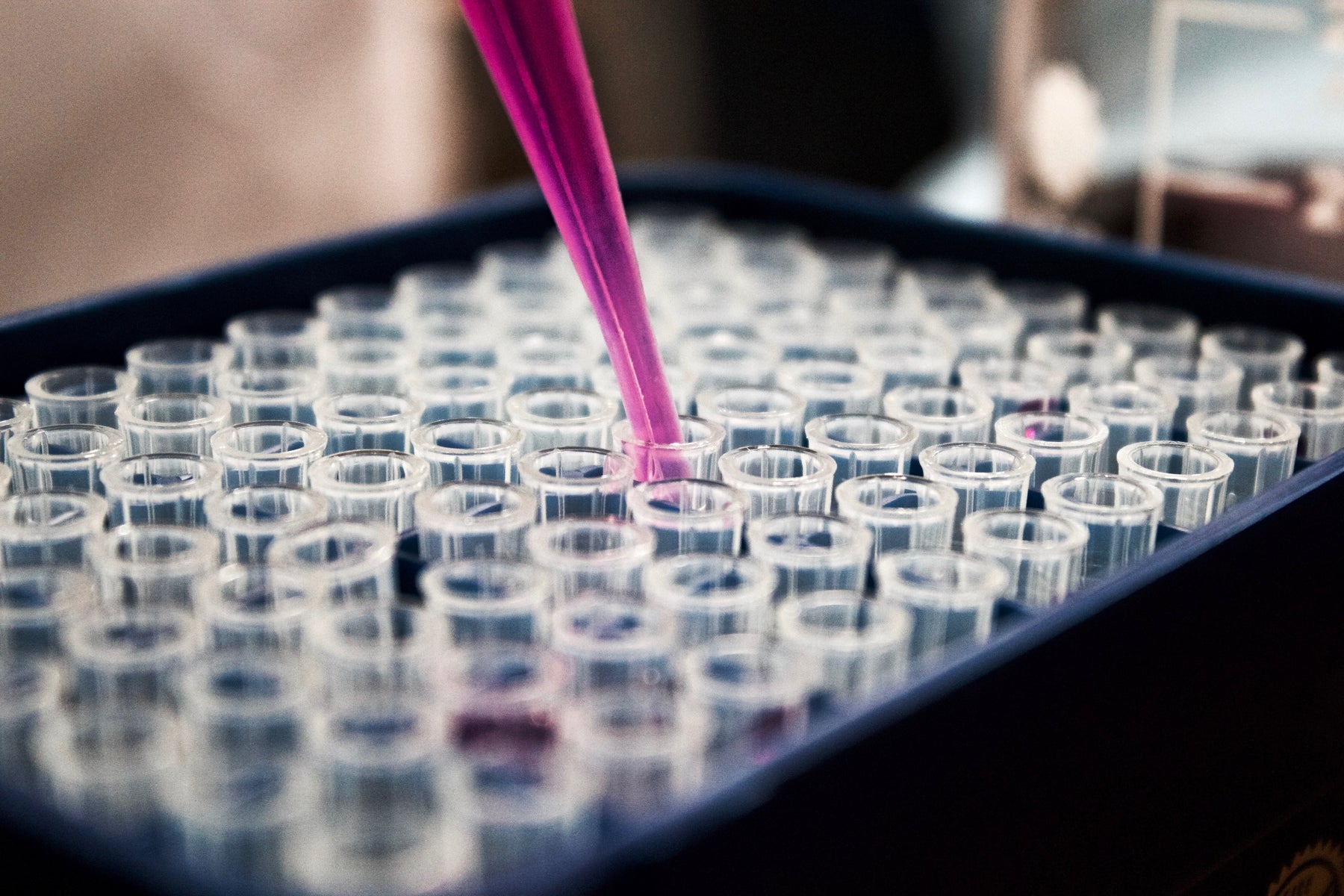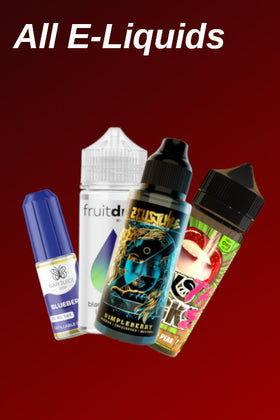
Different Types Of E-Liquid
The e-liquid and vape industry has taken off massively over the past 10 years, so much that it’s almost unrecognisable from what it used to be. People are no longer on basic starter pens and high nicotine tobacco flavours (well some are but there’s nothing wrong with that!)
Nowadays there are a lot more options and for new vapers or those looking to switch from smoking, it’s easy to get confused by all the different liquids available. On this page, we’re going to break down everything about modern-day e-liquids and make sure you’re getting the right information.
WHAT IS E-LIQUID?
In simple terms, an e-liquid consists of nicotine – optional – and flavourings. When used with an electronic cigarette it delivers nicotine to your body similarly to a traditional cigarette but without the horrible taste, smell and toxic chemicals.
There are a load of different names for e-liquid you may have heard of whether it’s been referred to vape juice, vape liquid, e-juice etc. but effectively it’s all the same thing. If it goes into electronic cigarettes it's an e-liquid and further down we’ll cover the different types.
HOW DOES E-LIQUID WORK?
As we know e-liquid contains nicotine and flavourings and is used in a vape device, but how does it work?
Most vape devices have 3 components. A battery, a tank which sits upon the battery and a coil within the tank.
When e-liquid is added to the tank it is soaked into the coil, when you fire up the battery the wire inside the coil is heated and vaporises the e-liquid held in the cotton within the coil. It’s incredibly simple in theory, however, there are different e-liquids depending on your device.
IS E-LIQUID HARMFUL?
Vaping is still relatively new, as such, we can’t be sure as to what the long term effects may be. Not enough time has passed for us to draw any conclusions. Let us be clear, if you have never smoked we do not advise you to start vaping as with anything going into your body there is always a risk.
But we can categorically say that when it comes to smoking vs vaping, vaping is far less harmful, multiple sources are citing this also. The NHS has posted an article here, as have Public Health England here and even cancer research here.
Unlike cigarettes, e-liquid doesn’t contain carcinogenic chemicals like tar, benzene, carbon monoxide and hydrogen cyanide (yes that cyanide). However, we can tell you what is in e-liquid.
WHAT IS IN E-LIQUID?
All e-liquid manufacturers must be licensed and approved in the UK and the vast majority will have a maximum of 4 ingredients:
- Propylene Glycol – PG
- Vegetable Glycerine – VG
- Flood Grade Flavourings
- Nicotine
There is no crazy amount of chemicals in this stuff but that isn’t the case, you’re likely to have products containing all of these ingredients throughout the house already, well, everything apart from the nicotine that is.
PROPYLENE GLYCOL – PG
This chemical is made to food safety standards and is fit for human consumption. It’s been used in the food industry and in medicines (It’s in Calpol!) and we consume these daily. It is used to help carry the nicotine and the flavour.
VEGETABLE GLYCERINE – VG
This thicker substance is also used within the food industry as a thickening agent and a sweetener, it is made from vegetable fats and is sometimes referred to as glycerol. It is used to help create vapour when used in a vape device.
FOOD FLAVOURINGS
This one is self-explanatory; across the UK we all consume these daily in almost everything we eat and drink.
NICOTINE
Nicotine is a highly addictive substance and poisonous in large doses. However, when it comes to smoking and vaping the only danger is the addictive nature of it, this is the reason we advise people who have never smoked not to start vaping. The Royal Society For Public Health claimed nicotine is “no more harmful to health than caffeine” you can find the full article here.
There are 2 main types of nicotine, which we will get into further down:
- Freebase
- Nicotine Salts
DIFFERENT TYPES OF E-LIQUID RATIOS
If you’ve already been doing your research you may have seen e-liquids come in different ratios or mixes, this refers to the amount of VG and PG present in a bottle. For example, a bottle of e-liquid at 70/30 contains 70% VG and 30% PG.
Knowing what these mean can make or break your vaping experience.
PG BASED JUICES
PG e-liquids (Where the latter number is equal or greater than 50) are commonly used by those who want to give up smoking. It offers higher nicotine contents and a bigger throat hit. The most common mix is 50/50, however, it’s not impossible to see liquids at 40/60 or 30/70. This kind of liquid is designed to simulate smoking and is often used in MTL (Mouth To Lung) devices. It is vaped at lower wattages and allows nicotine up to 20mg.
VG BASED JUICES
VG e-liquids (Where the former number is equal or greater than 60) are designed for creating thick clouds in a variety of exotic flavours that pack a punch. The most common ratio of these are 70/30 and typically only go up to 6mg of nicotine.
SHORTFILL E-LIQUIDS
Shortfills are larger bottles of nicotine-free e-liquid. Due to the TPD (Tobacco Product Directive) European shops are prohibited from selling e-liquids containing nicotine in a volume of more than 10ml. These bottles have space in them for you to fill with nicotine after to purchase to make it up to the desired strength.
As you can see different e-liquids cater to different vaping experiences and it’s down to you to decide on what will work best for you.
BEST E-LIQUID RATIO FOR VAPE PENS
Traditional vape pens are commonly used by people venturing into vaping for the first time and want to kick the habit of smoking, they are usually designed as a long thin pen styled shape. These devices fire at a lower wattage and have a smaller surface area in the tank.
For these styled devices a high PG e-liquid would be the way to go, think 50/50, 40/60, 30/70 etc. any other ratio could see your coils getting gunked up and needing changing more regularly as the liquid will be too thin.
BEST E-LIQUID FOR SUB OHM
If you see someone vaping and they are blowing great big clouds, then the chances are they are using a sub-ohm kit. They come in many shapes and sizes but ultimately, they are high powered devices heating e-liquid at a greater temperature.
For this reason, you are better of using a high VG ratio e-liquid, 70/30, 80/20 etc. as these liquids need a higher wattage to properly vaporise the liquid. Anything thinner and you could run into the problem of your tank leaking.
It’s also worth noting the resistance of your coil will have an impact on which e-liquid you use. A general rule of thumb is the higher the resistance of the coil the lower the power needed to heat it and vice versa. Therefore, the higher the resistance, the thinned the e-liquid.
Following both these guides will be a good guide for you to find the right ratio of e-liquid for your experience.
NICOTINE SALTS VS FREEBASE NICOTINE
Freebase Nicotine
Freebase nicotine is the norm, it was developed by Phillip Morris (Marlboro) in the 1960s to make the nicotine in their cigarettes stronger, therefore, more addictive. It is essentially the act of removing the “Salts” from natural nicotine making it a purer form of nicotine. By doing this it makes the solution more alkaline (Heightens the pH level). By doing this it makes it harsher in large doses. However, this form of nicotine also contains no additives, has a lower absorption rate, is suited towards direct lung vaping and supports complex flavour profiles.
So if freebase nicotine is purer, why are people switching to nicotine salts?
NICOTINE SALTS
First of all, nicotine salts do not contain your regular table salt and do not alter the flavour of your e-liquid. Chemically speaking a salt is made up of a reaction between a positive charge (acid) and a negative charge (base).
Enough of the science, nicotine salts are essentially the raw, organic variant of nicotine. With a little bit of chemical tweaking, the result is a high dose of nicotine without the harsh throat hit. It is absorbed into the bloodstream faster, smoother at high doses and ideal for new vapers. The downside is it can’t handle high flavour complexity and won’t create the big plumes of vapour some people are looking for.
The takeaway from this is no type of nicotine is safer or more harmful for you than the other. If you want faster acting nicotine hit on a mouth to lung device, go for nicotine salts. If you have a sub-ohm device that creates big clouds with fancy flavours freebase is the way to go.
If you’ve made it to the bottom of this post (and read it all) there’s a lot of information to digest. Hopefully, this guide has provided you with everything you need to know surrounding e-liquids if you’re still unsure get in contact with us. We will be happy to help you with any queries you may have. You can phone either of our shops, use the live chat function or send us an email at internetsales@touchofvape.



Leave a comment